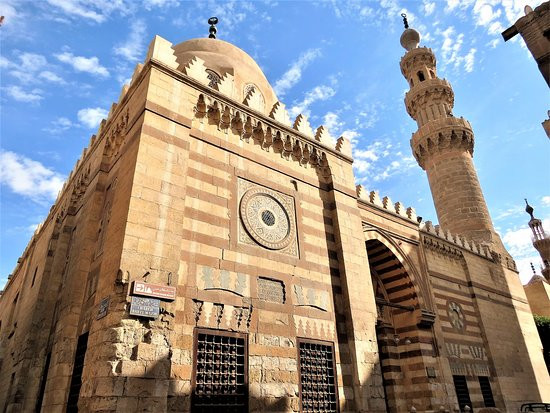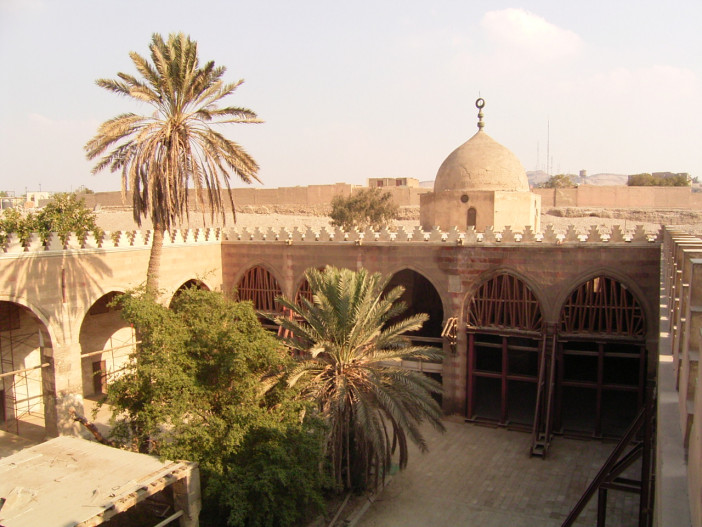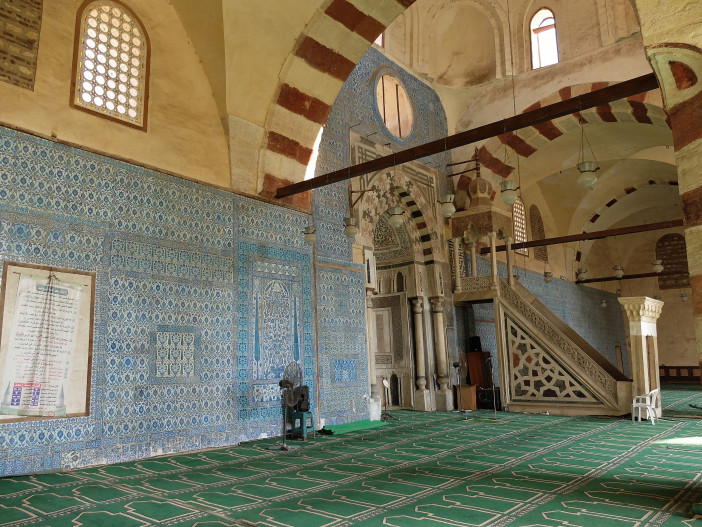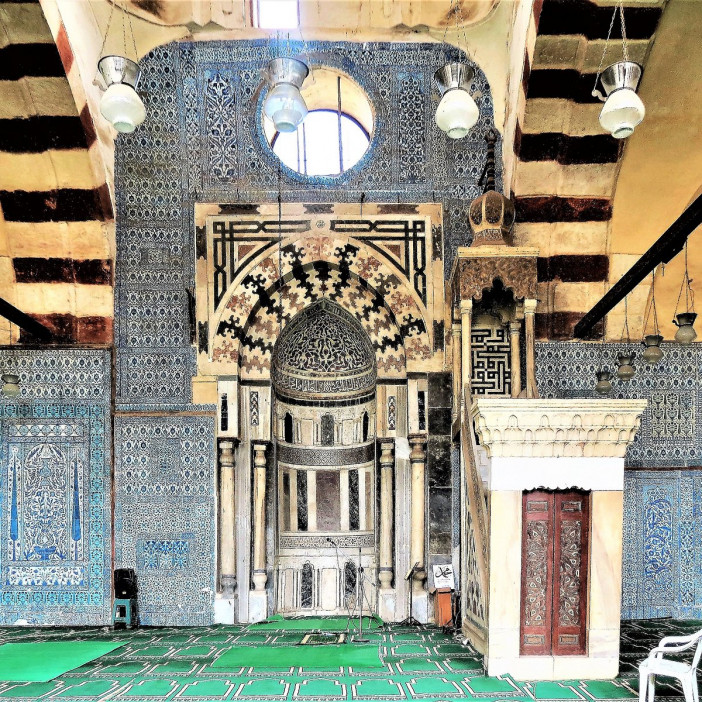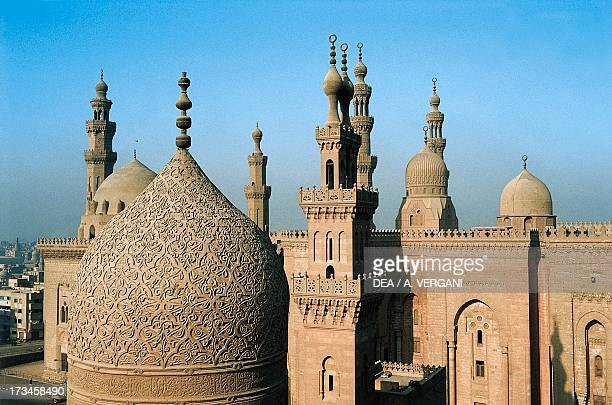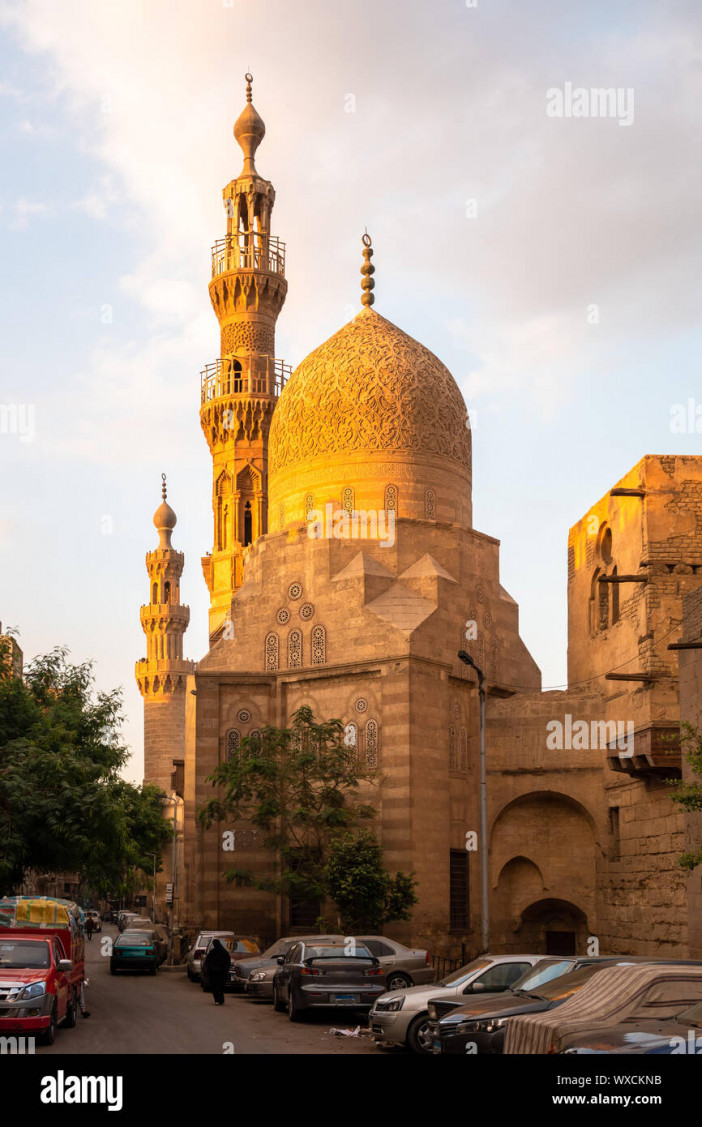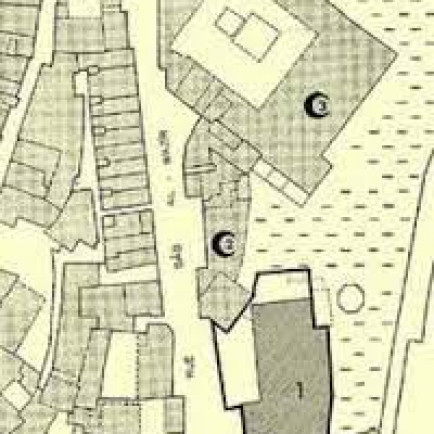Aqsunqur Mosque
History
The Blue Mosque, or Aqsunqur Mosque, is an exceptional example of early Mamluk religious architecture, and the largest mosque in the Bab al-Wazir district of Cairo. Built in 1347 by Amir Aqsunqur, it incorporates a mausoleum and impressive courtyard for prayer. The mosque’s first restoration came in 1652 under the Ottoman Amir Ibrahim Agha Mustafazan and included refurbishing the sanctuary with the blue Iznik tiles that lend the mosque its name
Urban and Architectural
A curious feature of the original scheme of this mosque is its employment of piers sustaining cross-vaults. This is a departure from the standard structural scheme for the interior of hypostyle mosques from the Bahri period, which consists of arcades formed by marble columns carrying arches which support a flat wooden ceiling. However, Aqsunqur, who is reported by al-Maqrizi to have himself been the supervisor on the construction site, had been governor of Tripoli, Syria, the great mosque of which (1294-1314) follows a hypostyle scheme with cross vaults on piers. In addition to these vaults on piers, the mosque has arcades on columns supporting a flat wooden ceiling, probably a later addition.
Description
The brick one-bay dome above the mihrab is carried on four plain squinches built of brick. Similar squinches are also used to carry the brick dome over the mausoleum of Kuchuk, but with a pendentive underneath each squinch. By the time this foundation was built, the use of plain squinches in the transitional zones of domes instead of muqarnas pendentives or squinches was old-fashioned. The blue Iznik tiles on the qibla wall were installed in 1652-64 by Ibrahim Agha, who seized and redecorated the mosque. They were imported either from Istanbul or from Damascus.
References
https://www.wmf.org/project/jama%E2%80%99-al-aqsunqur-blue-mosque
https://en.wikipedia.org/wiki/Aqsunqur_Mosque
Details
Location
El-Darb El-Ahmar, Cairo Governorate, Égypte
Worshippers
1250
Year of Build
1294-1314
Area
2500
Drawings
Map
History
The Blue Mosque, or Aqsunqur Mosque, is an exceptional example of early Mamluk religious architecture, and the largest mosque in the Bab al-Wazir district of Cairo. Built in 1347 by Amir Aqsunqur, it incorporates a mausoleum and impressive courtyard for prayer. The mosque’s first restoration came in 1652 under the Ottoman Amir Ibrahim Agha Mustafazan and included refurbishing the sanctuary with the blue Iznik tiles that lend the mosque its name
Urban and Architectural
A curious feature of the original scheme of this mosque is its employment of piers sustaining cross-vaults. This is a departure from the standard structural scheme for the interior of hypostyle mosques from the Bahri period, which consists of arcades formed by marble columns carrying arches which support a flat wooden ceiling. However, Aqsunqur, who is reported by al-Maqrizi to have himself been the supervisor on the construction site, had been governor of Tripoli, Syria, the great mosque of which (1294-1314) follows a hypostyle scheme with cross vaults on piers. In addition to these vaults on piers, the mosque has arcades on columns supporting a flat wooden ceiling, probably a later addition.
Description
The brick one-bay dome above the mihrab is carried on four plain squinches built of brick. Similar squinches are also used to carry the brick dome over the mausoleum of Kuchuk, but with a pendentive underneath each squinch. By the time this foundation was built, the use of plain squinches in the transitional zones of domes instead of muqarnas pendentives or squinches was old-fashioned. The blue Iznik tiles on the qibla wall were installed in 1652-64 by Ibrahim Agha, who seized and redecorated the mosque. They were imported either from Istanbul or from Damascus.


